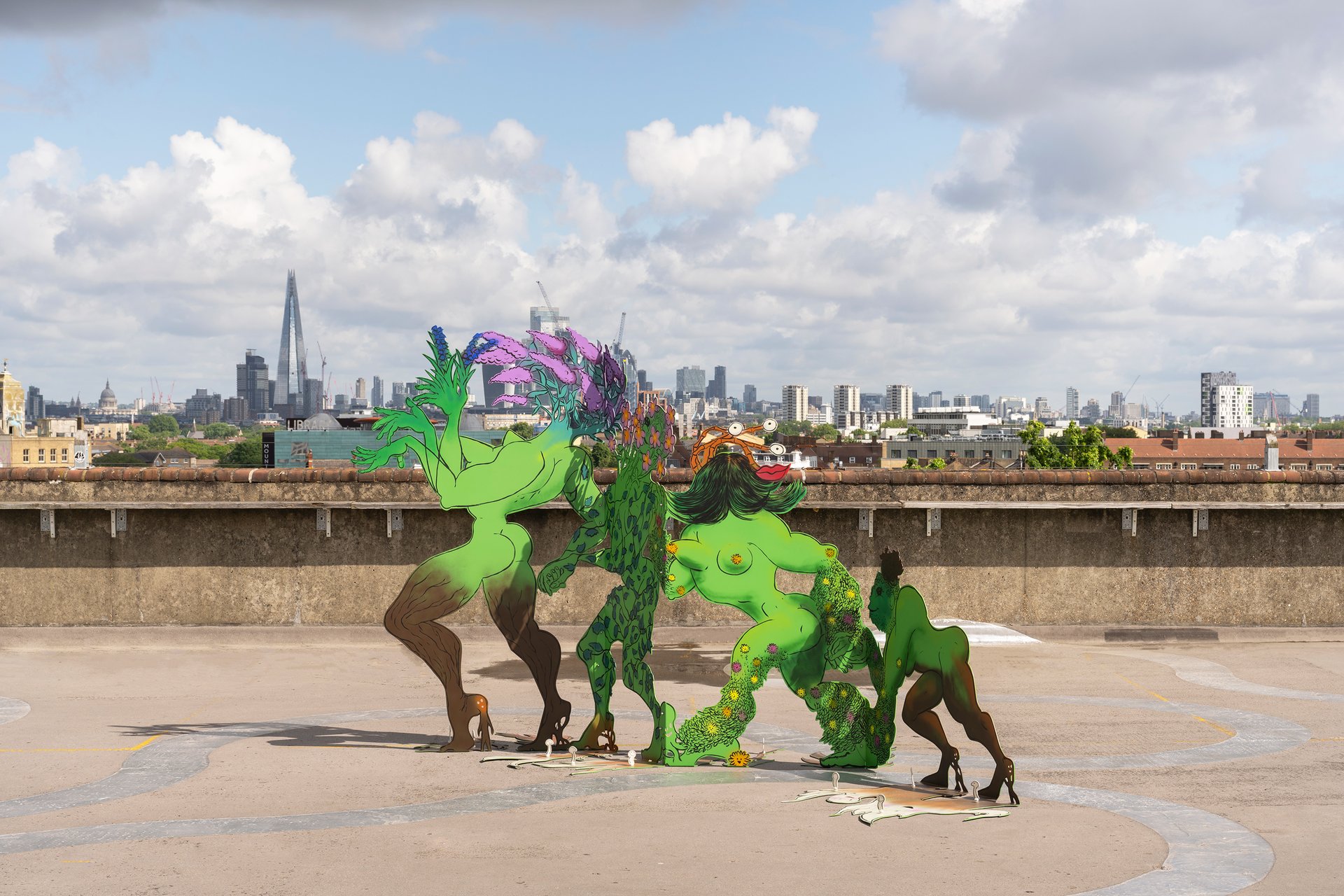Saelia Aparicio
B. 1982, Avila, Spain. Lives and works in London, UK.

On the second floor of the City Gallery, you will encounter a drawing installation by Saelia Aparicio In the Blink of Collapse. Time is a recurrent subject in her work, along with the metamorphic possibilities of the body and light. In her work, she suggests the possibility of a temporal experience – how we live, feel and perceive time – shaped by multiple intersecting factors: gender, race, class, age, ability, colonial history, cultural rhythm and technological presence. Whereas linear, Western clock time assumes universality, intersectional time insists on difference, layering, and conflict – not everyone lives time the same way. Her work is all about experimenting with perception. Drawing adapts perfectly well to her way of thinking as it follows the mind; it allows focus on aspects that are fundamental but neglected in today’s world. Why are we so obsessed with perfect bodies? Why do we need to see them, watch them, observe them and represent them? It may be our fear of the abject.
In 1980, the philosopher Julia Kristeva wrote the seminal book, Powers of Horror: An Essay on Abjection. There she writes that the abject is not just something disgusting – it is what the subject must reject to become a self. Abjection is the process through which we separate ourselves from what threatens our sense of order, identity and meaning. True. In our world, we are afraid of corpses, of death. We are afraid of bodily fluids, of the grotesque or deformed, of any – of all – bodies that do not fit the symbolic order.
In her transformation of the space, Aparicio uses convex mirrors as eyes. A convex mirror distorts and miniaturises everything it reflects. Unlike human eyes, convex mirrors cannot choose where or what to see. They are hyper-receptive, always watching, but without consciousness. These prominent eyes, embedded in flat figures on the wall, address the non-human imposed upon us as the enemy of empathy. In that sense, they can be read as aberrant eyes. On the other hand, they are also sensorial apertures, embodying the possibility of cosmic vision, like the idols of Tell Brak. Her notion of vision is no longer anchored in the human and the rational, but in the possibility of creatures, like artificial intelligence, that are blind but illuminated.
Supported by Acción Cultural Española (AC/E) and the Embassy of Spain in Slovenia.

